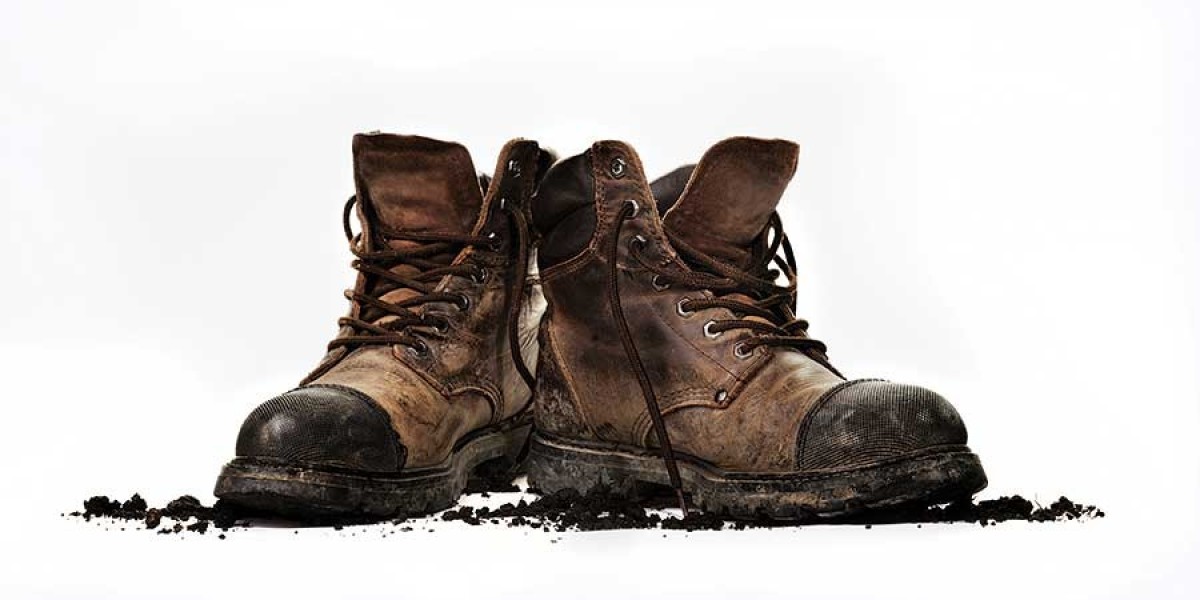Types
Each boot is designed for protection in different work conditions. Here are the main types:
Steel-Toe Boots
These boots have a reinforced steel toe cap to protect your feet from falling objects or crushed injuries. The cap must meet ASTM impact and compression standards. Steel-toe boots are a minimum requirement on most job sites for their impact and crush protection. They are a versatile choice for tasks like machinery operation, warehousing, trades work and more.
Electrical Hazard Boots
If your work involves the risk of electrical shock, you need boots specially designed for this hazard. They have insulating properties and are often made with materials that don't conduct electricity like rubber. Electrical hazard boots help protect against contact with live wires or electrical fires and explosions. They are rated for electrical hazard protection.
Waterproof Boots
Many jobs involve working in wet or muddy conditions. Waterproof boots use advanced membrane technologies to keep your feet dry. Look for Work Boots rated as waterproof rather than water resistant. Fully waterproof boots help prevent trench foot and keep you comfortable in wet work. They are essential for jobs like construction, utilities work, landscaping and more.
Insulated or Cold Weather Boots
For jobs done in cold climates, you need boots with insulation. Insulated boots use thick, warm linings like wool, synthetic fills or removable insulating insoles. The insulation wicks away moisture while retaining heat. Insulated boots with insulation rated for certain temperatures below freezing will keep feet warm and protected from frostbite. Jobs like welding, infrastructure work and utilities often require cold weather rated boots.
Safety Features of Work Boots
Beyond the basic requirements like steel toes or electrical ratings, work boots incorporate many other safety features:
Slip Resistance - Boots designed for slippery conditions have slip-resistant soles with deep lugs that grip different surfaces. This helps prevent slips and falls. Soles will be oil and grease resistant too.
Ankle Support - High tops or boots with reinforcements provide support to help prevent ankles from rolling. This is important for tasks like climbing, carrying heavy loads or working on uneven surfaces.
Puncture Resistant - Jobs with sharp objects risk puncture wounds. Reinforced toe boxes, midsoles and puncture resistant (plate) options provide an extra layer of security.
Kevlar Linings - Cut resistant Kevlar fiber linings offer protection against lacerations from sharp edges on metal or glass. They are becoming a more common safety feature.
Breathability - Moisture-wicking breathable linings help maintain comfort. Sweaty feet are at higher risk for infections. Breathability is key for warmer jobs and climates.
Cement Worker Style Boots -Tall design that goes up shins provides support and protection for lower legs when working with heavy loads, debris or climbing ladders with tools.
Fit is also critical for optimizing support, comfort and safety over long shifts. Proper fit helps prevent injuries from ill-fitting footwear. Experienced advice from work boot specialists can ensure the right size, width and fit.
Caring for Work Boots
High-quality boots are an investment that needs regular care and maintenance to maximize their safety performance and lifespan:
- Inspect for wear and tear before each use. Replace worn soles or if safety features are compromised.
- Clean out dirt and debris after each use with a brush. For heavy soils, spot clean with a rag and water.
- Apply protective conditioners or waterproofing treatments periodically as directed. This replenishes features like waterproofing.
- Allow to air dry completely between wears if they get wet to avoid bacteria and odor growth.
- Consider waterproofing or insulating interior insoles for extra foot protection within the boot.
-Rotate multiple pairs of boots for maximum longevity. This allows shoes to fully dry out between wears.
Choosing the right work boot model for your job tasks and conditions is critical to keep feet safe, comfortable and productive on the job. Employers should ensure their workforce has suitable, well-maintained protective footwear. With proper selection, care and maintenance, high-quality work boots can last for years of daily use.
Get More insights on Work Boots
Pick the language that you prefer-
About Author-
Alice Mutum is a seasoned senior content editor at Coherent Market Insights, leveraging extensive expertise gained from her previous role as a content writer. With seven years in content development, Alice masterfully employs SEO best practices and cutting-edge digital marketing strategies to craft high-ranking, impactful content. As an editor, she meticulously ensures flawless grammar and punctuation, precise data accuracy, and perfect alignment with audience needs in every research report. Alice's dedication to excellence and her strategic approach to content make her an invaluable asset in the world of market insights.
(LinkedIn: www.linkedin.com/in/alice-mutum-3b247b137 )










